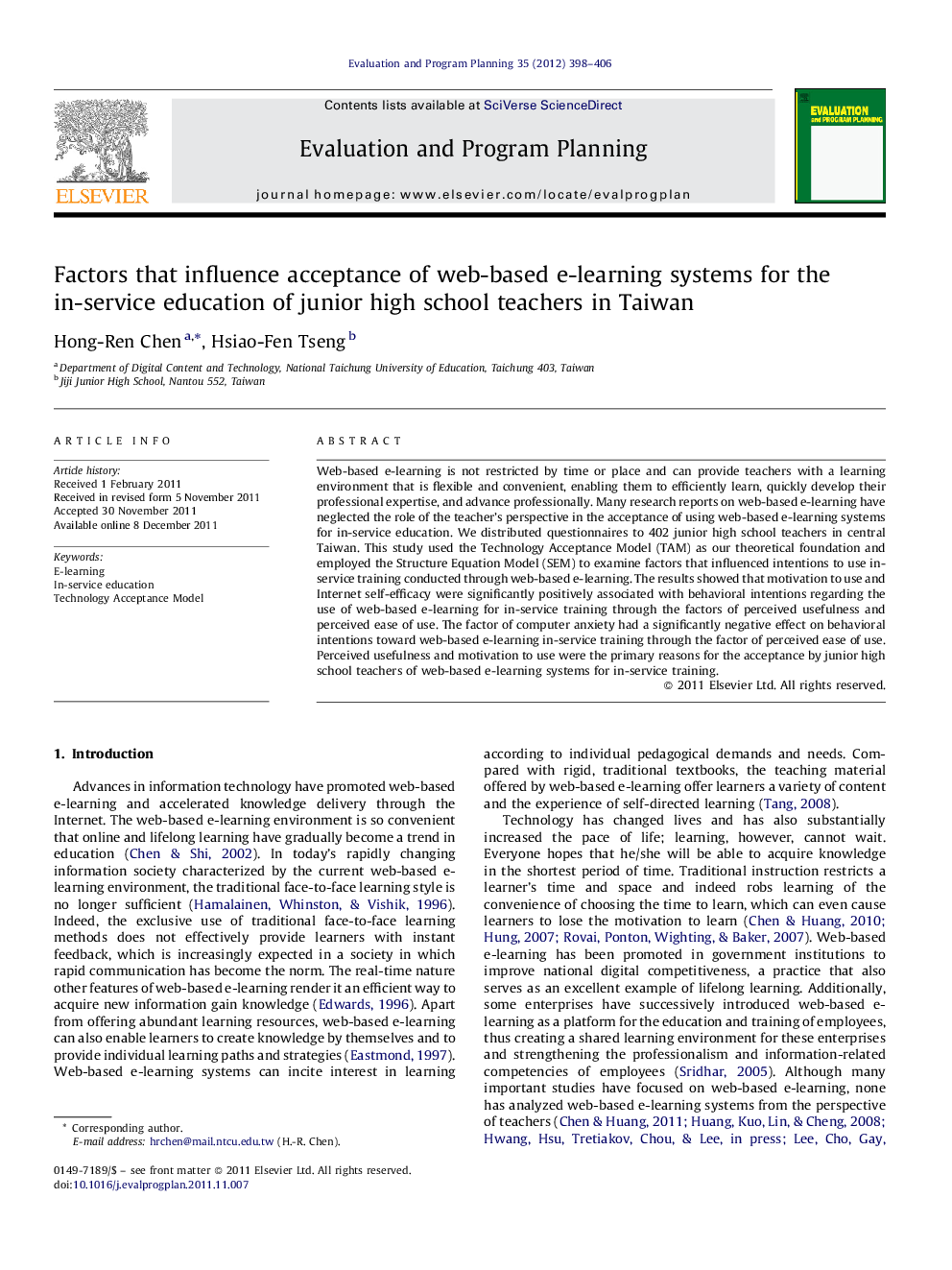| Article ID | Journal | Published Year | Pages | File Type |
|---|---|---|---|---|
| 322286 | Evaluation and Program Planning | 2012 | 9 Pages |
Web-based e-learning is not restricted by time or place and can provide teachers with a learning environment that is flexible and convenient, enabling them to efficiently learn, quickly develop their professional expertise, and advance professionally. Many research reports on web-based e-learning have neglected the role of the teacher's perspective in the acceptance of using web-based e-learning systems for in-service education. We distributed questionnaires to 402 junior high school teachers in central Taiwan. This study used the Technology Acceptance Model (TAM) as our theoretical foundation and employed the Structure Equation Model (SEM) to examine factors that influenced intentions to use in-service training conducted through web-based e-learning. The results showed that motivation to use and Internet self-efficacy were significantly positively associated with behavioral intentions regarding the use of web-based e-learning for in-service training through the factors of perceived usefulness and perceived ease of use. The factor of computer anxiety had a significantly negative effect on behavioral intentions toward web-based e-learning in-service training through the factor of perceived ease of use. Perceived usefulness and motivation to use were the primary reasons for the acceptance by junior high school teachers of web-based e-learning systems for in-service training.
► Web-based e-learning has considered the role of the teacher's perspective. ► Perceived usefulness and motivation to use were the primary reasons. ► Teachers have a flexible and convenient learning environment to expand expertise.
